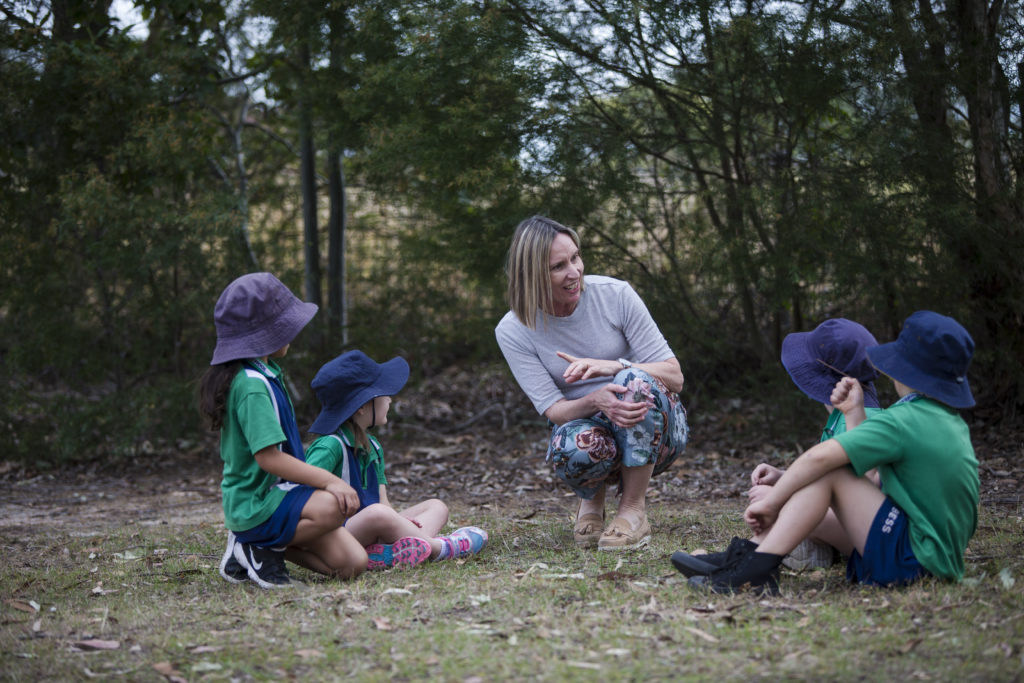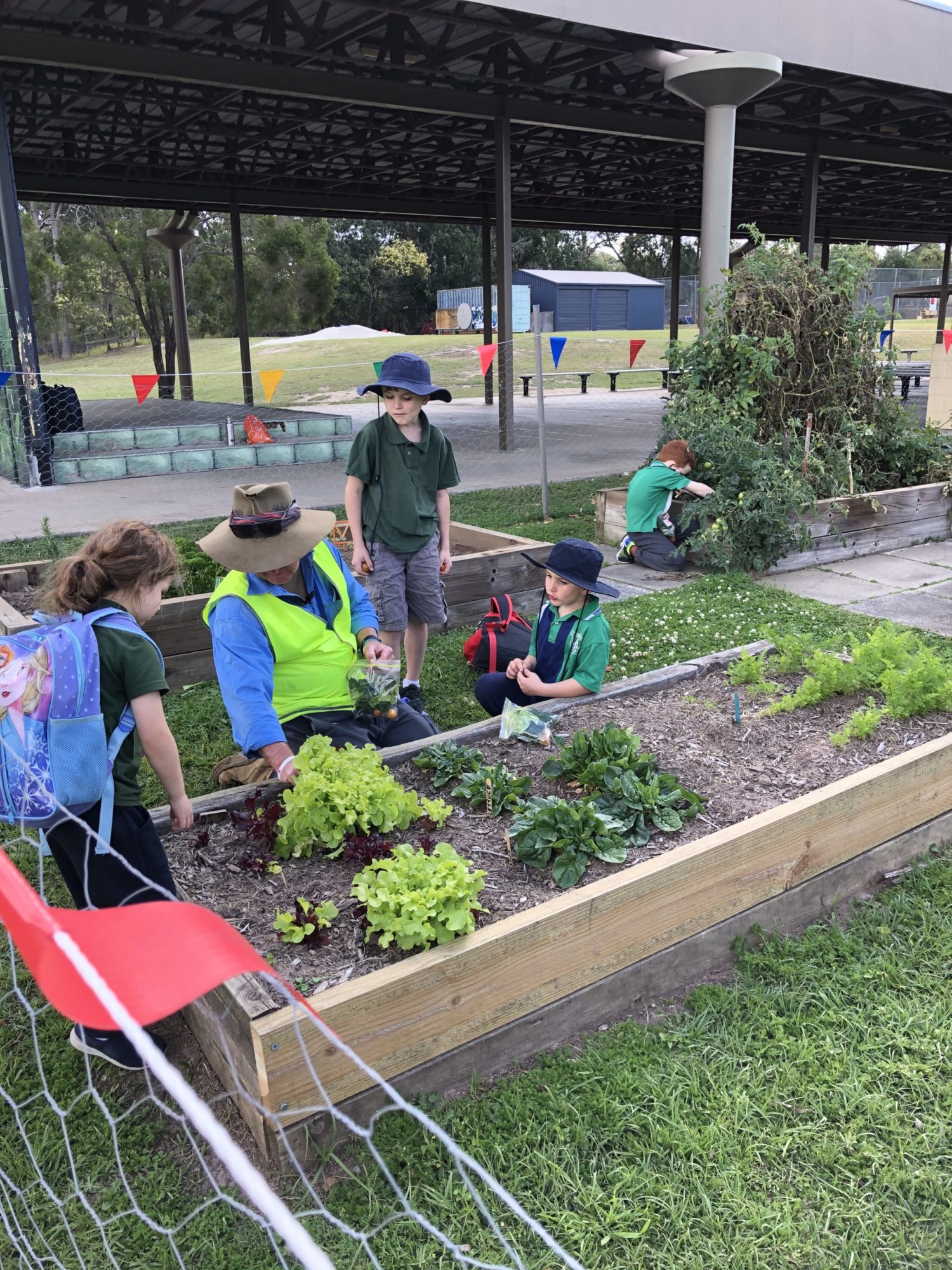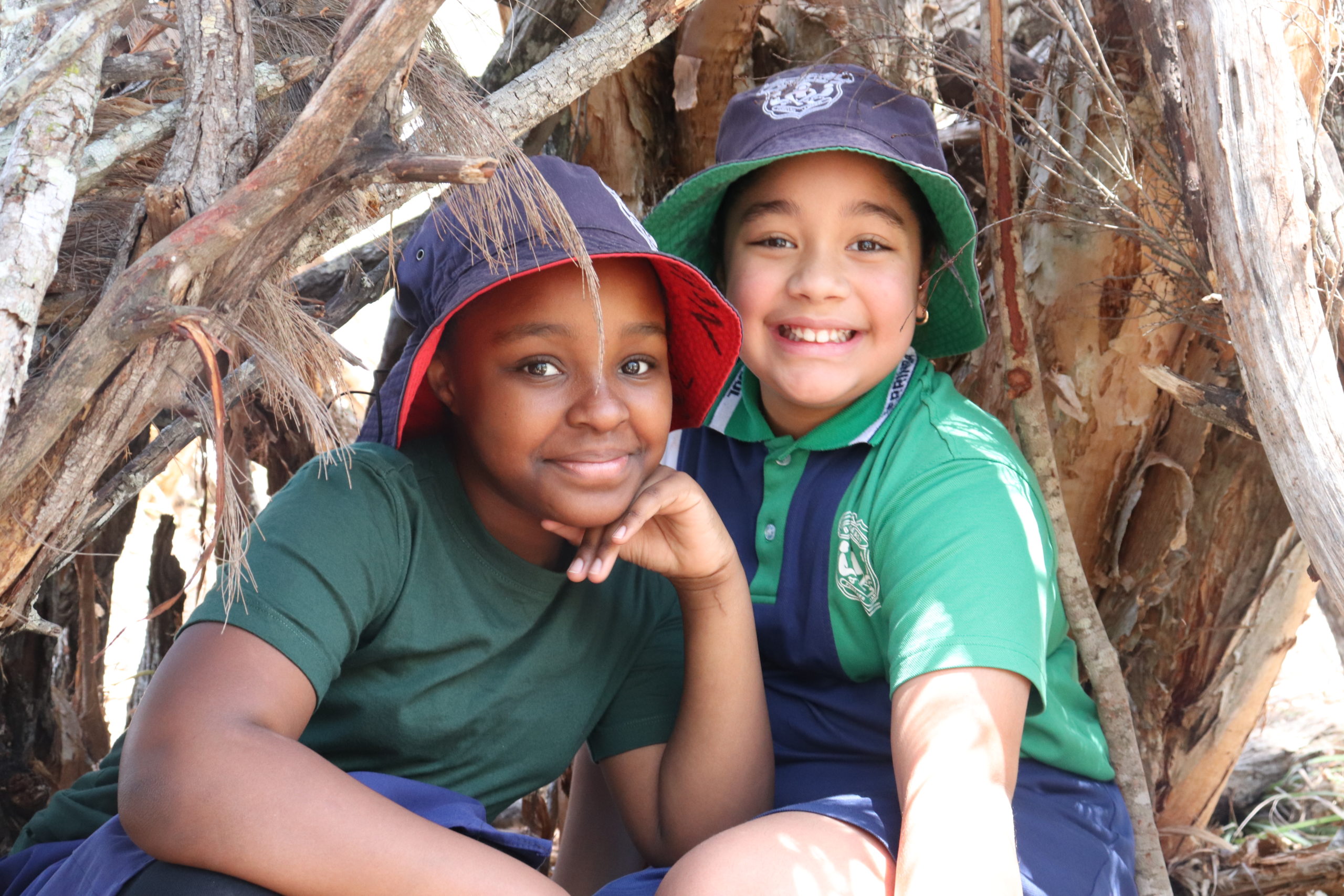Nature Play at Berrinba East State School – A Case Study
Berrinba East State School is a school of 450 students situated in Logan Central. The school has a diverse cultural background with 40% of students speaking English as an additional language. Additionally, upon school entry, over 50% of students were identified as being developmentally vulnerable in the area of oral language. The limited language skills of a significant proportion of the student body led to problematic social interactions as well as students having the reduced capacity to express their needs. Unfortunately, this resulted in adverse student behaviour.
 Despite the school embedding many innovative and award-winning strategies to develop the oral language of students and as such, improve social interactions, there were still a high number of suspensions and major behaviour incidents. While the students were slowly developing their language skills, one key element was missing. The missing element was that students did not have the experiences and inspiration for rich and meaningful conversations with teachers and peers. This is where Nature Play came to the rescue.
Despite the school embedding many innovative and award-winning strategies to develop the oral language of students and as such, improve social interactions, there were still a high number of suspensions and major behaviour incidents. While the students were slowly developing their language skills, one key element was missing. The missing element was that students did not have the experiences and inspiration for rich and meaningful conversations with teachers and peers. This is where Nature Play came to the rescue.
Nature Play and Outdoor Learning was implemented in three key areas across the school. These were –
– Unstructured but engaging play opportunities during lunch breaks.
– Targeted engagement intervention for highly disengaged students.
– Connecting and embedding Nature Play and Outdoor Learning into classroom planning.
This approach saw the school connect with Nature Play Queensland for professional development opportunities and to create outdoor learning spaces for students. These spaces included –
– Converting a previously out of bounds space into a Forest Play Area.
– Converting unused Cricket Nets into a Farm Space complete with veggie gardens, compost heaps, worm farms, chicken coup, and duck enclosure.
– Converting an unused tennis court into a Loose Parts Space complete with pallets, tyres, milk crates, and other items donated by the community.
– Converting an unused paddock space into a mountain bike track.

Since the development of these spaces, staff have been inspired to develop other garden spaces, a fish pond (complete with local endangered fish), a frog pond, an outdoor orchestra (using loose parts as instruments), and many bug motels.
Unstructured play during lunch breaks features the forest and loose parts areas. Students are provided provocations where they build, climb, and play imaginative games. Staff in these areas act as ‘Play Facilitators’ and guide students through risk assessment and social interactions through modeling and questioning. Students accessing the school’s Bike Club program spend their lunch break either repairing and/or maintaining bikes in our bike shed, out on the track conducting track maintenance, or riding their bikes. This approach has seen a significant reduction in incidents of student behaviour including –
– 70% reduction in major behaviour referrals from lunch breaks.
– 70% reduction in major behaviour in the time directly after a lunch break.
The student engagement program identified 30 students who were identified most at risk of disengagement. This included students who had a significant number of suspensions and/or had a high rate of absenteeism. Students worked in groups of 10 for a minimum of 3 x 90 minutes sessions a week with the Student Engagement Teacher. Students engage in inquiry and/or project-based learning with a focus on creating a sense of purpose, meaningfulness, and accomplishment in their work. The work completed by students addressed the General Capabilities of the Australian Curriculum in Personal and Social Learning, Literacy, and Critical Thinking and Design and was connected to the content covered in class. Students completed tasks such as veggie garden construction and maintenance, research and care for animals (e.g. chickens, ducks, insects, fish, and frogs), and developing an understanding native language of various plants in our forest. Students were also responsible for the maintenance of our outdoor learning spaces. This intervention has had a dramatic impact on this student group including –
– An improvement in attendance of the group by 8.5%. This has resulted in the students on average accessing more than 2 weeks extra of school than they would have prior to the intervention.
– 64% reduction in days lost due to suspension.
– 40% reduction in behaviour resulting in a suspension.
– 73% reduction in major behaviour demonstrated by students within the group.
 The third part of this approach saw Nature Play embedded in the planning and delivery of classroom units. Starting with a pilot in Year 2, planning centered on an Outdoor concept or theme (in this case it was the life cycle of chickens) with the content and achievement standards aligned to this theme. The strategies shared during the Nature Play Professional Development were combined with Age Appropriate Pedagogy approaches form a framework from which teachers made decisions as to how they would teach the content. The term prior to the implementation of the pilot, the two classes in Year 2 had amassed 53 major behaviour referrals for Term 1. In the two and a half terms since implementation, the two classes have had 29 Major Behaviour referrals in total. The embedding of Nature Play and Outdoor Learning has been extended across a range of classes along with specialist lessons in Music and PE with similar results.
The third part of this approach saw Nature Play embedded in the planning and delivery of classroom units. Starting with a pilot in Year 2, planning centered on an Outdoor concept or theme (in this case it was the life cycle of chickens) with the content and achievement standards aligned to this theme. The strategies shared during the Nature Play Professional Development were combined with Age Appropriate Pedagogy approaches form a framework from which teachers made decisions as to how they would teach the content. The term prior to the implementation of the pilot, the two classes in Year 2 had amassed 53 major behaviour referrals for Term 1. In the two and a half terms since implementation, the two classes have had 29 Major Behaviour referrals in total. The embedding of Nature Play and Outdoor Learning has been extended across a range of classes along with specialist lessons in Music and PE with similar results.
Through the vision of ‘Bringing Back Childhood’, the staff at Berrinba East State School have provided rich learning experiences through nature that have provided the stimulus and motivation for language development. As a result, students possess the skill set to better interact with their peers while also engaging in meaningful learning and play experiences.





